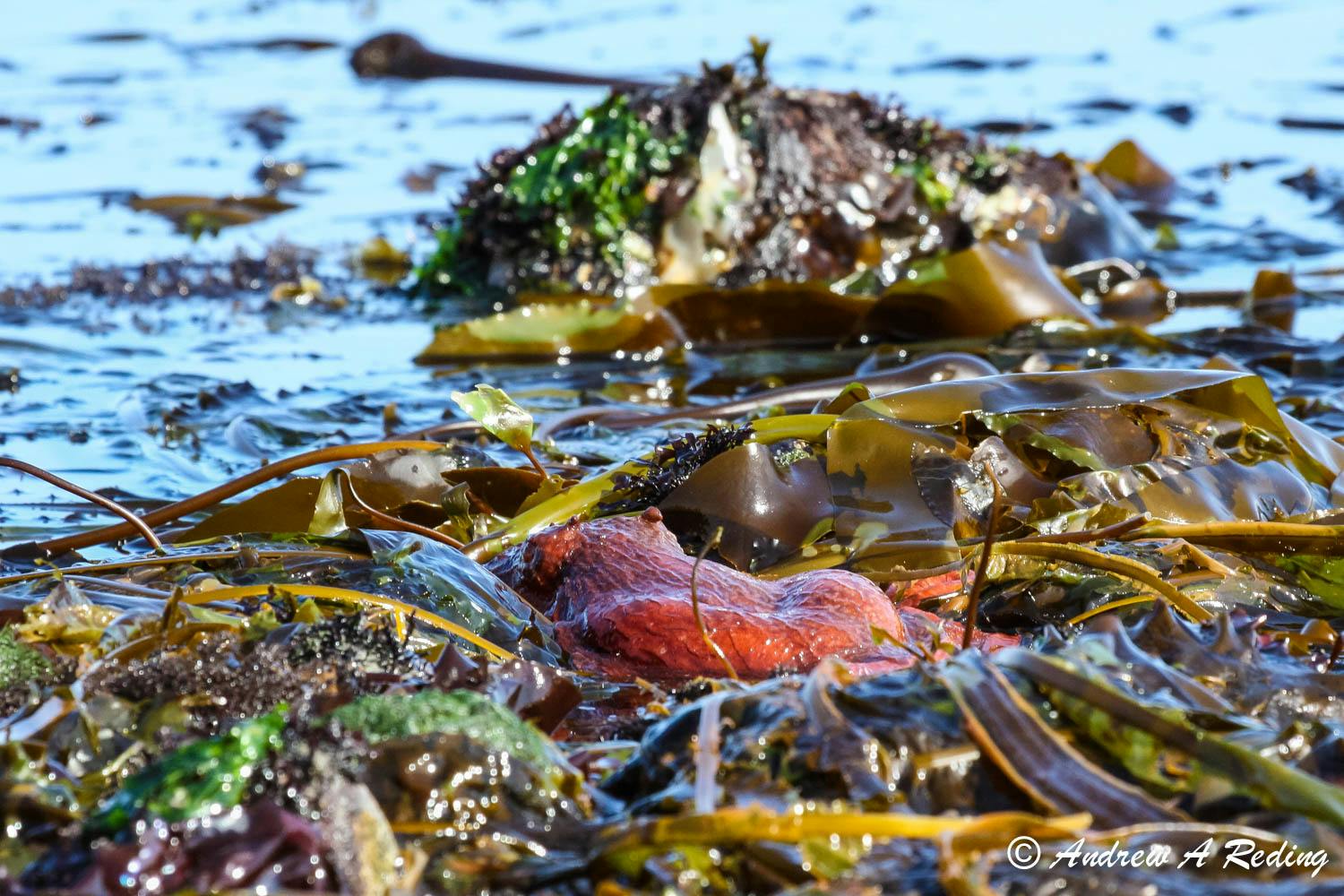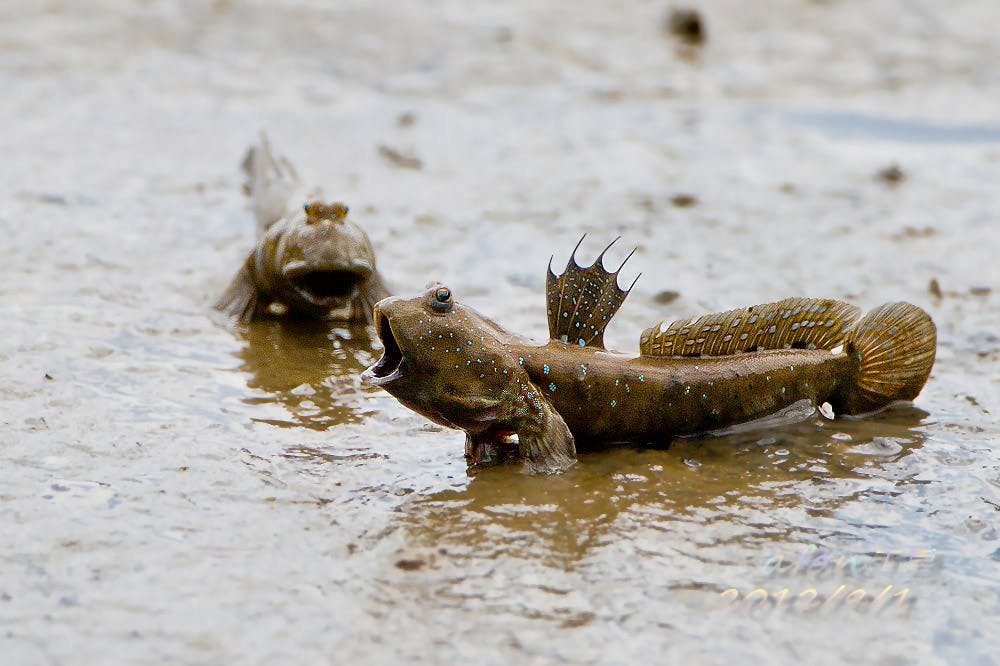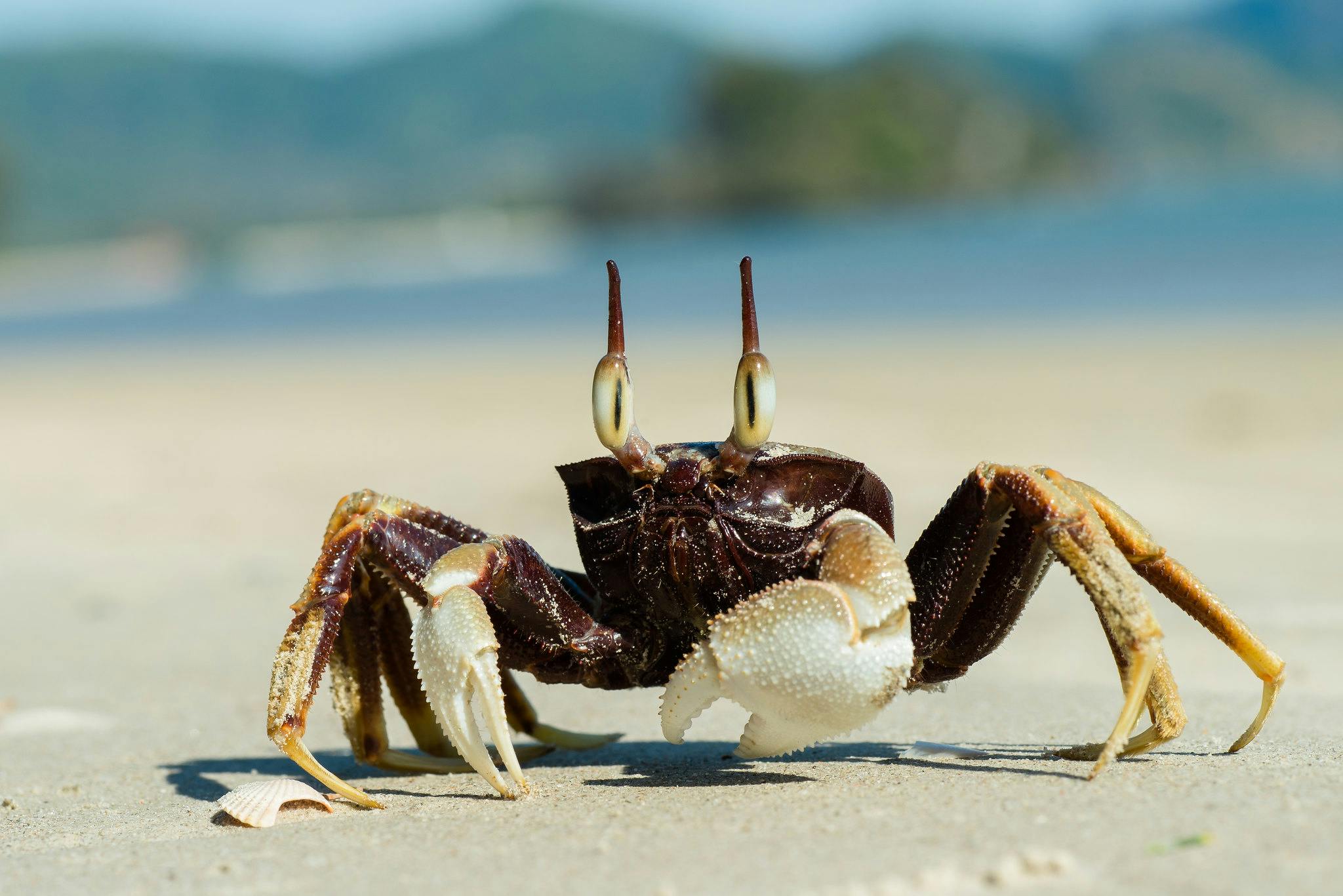Fish out of water usually aren’t very happy. Fish can start to suffocate out of water, because they need water to breathe; similarly, humans can get into danger if they inhale water, because our lungs work with air.
Like all animals, fish, from the Paedocypris progenetica (that’s the tiniest fish in the world) to the king of herrings known as the oarfish, need oxygen. Terrestrial (land) animals, inhale air through their noses, mouths, and even their skin, to bring oxygen to their lungs.
Water has oxygen too. Fish get the oxygen their bodies need by pumping water over their gills. That’s why fish keep opening and closing their mouths all the time: they’re breathing. Gills serve the same purpose as our lungs do. Gills extract oxygen from water and send it into the fish’s blood stream. For this reason, most fish, and other aquatic animals that get oxygen from water, can’t survive on land very long.
However, there are lots of fish, and other aquatic animals, that are snug as a bugs out of the water. Some fish, and other aquatic animals like mulluscs and crustaceans, can venture onto the shore for several minutes without any trouble, and others can even stay out of water for years at a time. What these land-loving fish (and other sea creatures) have in common is they’ve figured out a way to continue to get oxygen once they leave the water.
Here are a few of our favourite “fish out of water”
Scientists found that fish and aquatic animals that can leave the water without much trouble are typically those that live in intertidal zones. An intertidal zone is a place that is under water when the tide is high, and out of water when the tide is low. Similarly some fish that live in floodplains, areas that are subject both dry and wet times, can also survive comfortably on land.
Cephalopods (Octopus) : Cephalopods, like octopus, are part of the mulluscs phylum. This is the same animal phylum as clams and snails. Octopus are very clever. Some species of octopus that reside in tidal areas or near-shore leave the water to go for crawl. Scientists have found that they like to hunt for food in tidal pools. However, just like people need air, octopi need water to breathe. When they leave the ocean to crawl around tidal pools it’s almost like holding their breath. They can only stay out of the water for several minutes at a time. As long as they stay moist they’re okay, as their bodies can still get oxygen this way. As octopus are typically nocturnal their out of water trips usually happen under the cover of darkness. Inky the Octopus’ great escape from the National Aquarium of New Zealand in April 2016 happened at night. Inky, a common New Zealand octopus, escaped her tank, crossed the floor, and made it home to the ocean by crawling through a 15 cm drain pipe.

African Lungfish: Lungfish are very special because, instead of breathing water, they breathe air. Like other animals with lungs, lungfish have to come to the surface of the water to take a breath. If they don’t, they can drown. Depending on the species, African lungfish have one or 2 lungs. In West and South Africa, where lungfish live, there is a dry season. The swamps, rivers, and streams they call home can completely dry up and these special fish may have to live outside of the water for many months. In order to survive, they burrow into the mud in a cocoon. They continue to rely on their lungs to breathe air while they wait for the rain to come back and the water to return. Lungfish can survive for years out of water. When the rains return, lungfish go back to swimming.
Clingfish: Clingfish are a type of fish with a very strong sucker on their stomachs, which they use to attach themselves to rocks in very heavy surf. Clingfish can leave the water and breathe air stored in their gills. They can survive up to 3 and a half days out of the water.
Gobies: Gobies, such as mudskippers, are truly amphibious fish. They are also the most famous fish-out-of-water. Mudskippers breathe air. And, like other amphibians, when they are out of the water they can get oxygen through their skin and mouth-lining. They can breathe with their gills to absorb oxygen. They also carry water around in their gill chambers to help them from drying out. As long as the mudskipper can keep itself moist, it can stay out of the water as long as it likes.

Crabs: There are three different types of crabs: aquatic, meaning they spend their whole life in the water; intertidal, meaning they live both in and out of the water; and terrestrial, meaning they spend their life on land. Each category of crab breathes in a different way. Aquatic crabs, like fish, have gills to get the oxygen from water. Land crabs have specially adapted gills that work on land. Some types of land crabs even have lungs. Intertidal crabs live both in and out of water. They have cavities throughout their bodies that they can use to store water for when they are on land. Their gills work great out of the water, so long as they are kept moist.Intertidal crabs have a special moveable platesthat help seal in moisture around their gills when they are out of the water.

